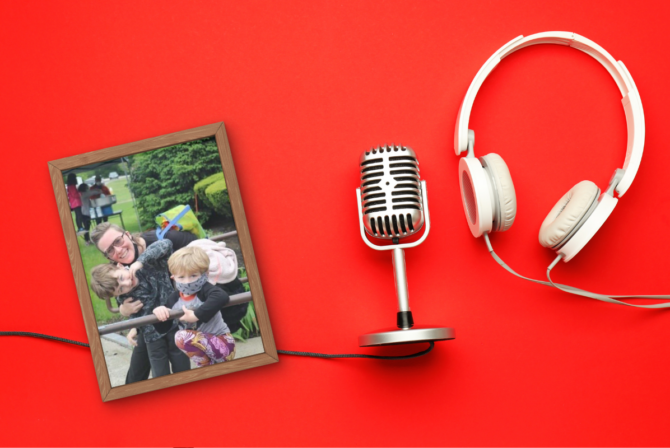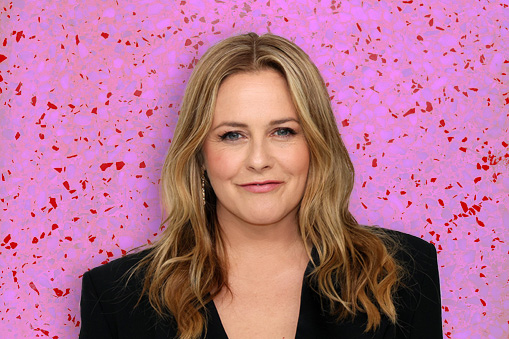This past summer, I taught my child to fail.
This must defy some canon of parenthood, which compels us to equip our children with all the things they need to succeed.
But by summer’s end, my husband and I had exhausted our bag of tricks (and our patience) trying to teach almost-6-year old Emmet to ride his two-wheel bike: the same bike from which he had begged us to remove the training wheels, after watching a younger neighbor zipping around on two wheels.
At first, we tried balancing him on the bike without pedaling, so that he could feel the sensation of instability.
“Wooooo!” he exclaimed, as he tilted over and planted his feet on the ground.
“That’s good!” Jeff affirmed. “When you ‘feel the woo,’ you know to balance yourself!”
Emmet wasn’t interested in the “woo.” In fact, the woo scared him off his bike for days. Turns out, Emmet was absolutely terrified of falling.
Plan B was to bike on grass, so that when he fell, there would be less wound, more grass stain—good for Emmet’s knees and my nausea threshold. But riding on grass was bumpy and hard and he never got enough momentum for us to let go of the back of his seat.
Plan C was Emmet’s: he decided to “pad up” in pursuit of the painless fall. He put on a long-sleeved shirt, a sweatshirt, sweatpants, and two pairs of socks. In July. I was sweating just looking at him. But when we took the bike into the street, he grew fearful again.
“Promise you won’t let go!” he begged.
I didn’t let go, of course. I didn’t want him to fall any more than he did. Becoming a parent means finally grasping “this hurts me more than it hurts you.”
I wasn’t anticipating this resistance to learning something new. Up until now, Emmet had been one determined little dude. When he first learned how to make paper airplanes, he spent weeks creasing and folding paper, turning my living room into a hangar with hundreds of airplanes. And when his occupational therapist suggested more time at the playground to increase his upper body strength, Emmet spent months hanging and dropping from the monkey bars, refusing to give up until he was able to fly across effortlessly, a look of fierce concentration in his eyes.
I assumed that Emmet would tackle bike-riding with similar doggedness. But his fear of falling onto concrete was eclipsing his desire to reach this milestone.
Those long lazy evenings of summer, we often played outside after dinner, drawing chalk hopscotch squares, tossing a frisbee, throwing a football. But the bicycle was shoved in a corner of the garage, gathering dust, a blue helmet dangling from the handlebars.
Finally, it was the last week of summer and our family was getting ready for a road trip to South Carolina to spend the week at Hilton Head Island with my parents. We packed Emmet’s bike in our car, in one last-ditch hope that he would give it one last shot.
The beach at Hilton Head Island was heavenly. The tides were strong. In the mornings, we sat on a sliver of beach as warm waves teased our toes. But in the late afternoon, the ocean retreated, abandoning miles of firm, cool sand, perfect for a 5-year-old boy to learn to ride his bike.
But our sandy dreams were short-lived. Although Jeff ran alongside him, holding his seat and encouraging him to keep pedaling, Emmet insisted that he couldn’t do it.
“It’ll hurt if I fall,” he whimpered.
My mom, who had been watching from her low beach chair, proposed an idea.
“What if you just teach him to fall?”
Teach him to fall? Funny how much the word “fall” sounded like “fail.” Would I be teaching Emmet to fail? It went against everything I knew, as both a parent and a teacher.
Or did it?
I thought about how, as a teacher, I get frustrated when parents do their kids’ homework, or call to argue over points on a test. They refuse to let their kids fail, as if it’s the only indicator of their child’s future progress or worse, a reflection on them. As an educator, I know that failure is an integral part of the learning process, and that kids learn way more from their mistakes than from anything else. When I became a parent six years ago, I vowed to let Emmet make his own.
I realized that teaching him to fall would encourage him to face his fear head on, hopefully not literally. It would show him that falling wasn’t the worst thing in the world, that he could withstand a few scrapes and bruises. And also, that he could get back on and try again.
So the next day, Emmet’s family–his Nana and Papa, his mom and his dad–gathered around him and his bike on the beach in the late afternoon, the low sun making tall shadows on the sand. We watched as he climbed onto the seat and put his feet on the pedals. But this time, no one held the back of his seat. We told him that he was supposed to fall, that he was actually practicing falling.
“Just lean over and let yourself go,” we told him. “It’s OK to fall.”
He was scared. He didn’t want to fall. But in what might be the very definition of bravery, Emmet got on the bike. He pushed down on one pedal.
And he fell.
Just toppled right over, about three seconds after he’d started. From the ground, he looked up at us, at first surprised, but then he smiled. I didn’t realize I’d been holding my breath.
“I’m OK,” he assured us. “That didn’t really hurt so much. I’m OK.”
And he was.
Teaching him to fall shed light on his fear, demystifying it, like when your parents open your closet door, and show you that there is no monster hiding inside. It taught Emmet how to take control of the thing that scared him. And that seems like a lesson that goes way beyond bike-riding.
Emmet didn’t learn to ride his bike that day. All that falling was draining. But the very next day, he got back on his bike and tried again, his dad running alongside him on a wide expanse of sand.
“Keep pedaling!” yelled Jeff, as he finally let go of the seat. “Don’t stop pedaling!”
He’s still pedaling.
Like this post? Get the best of Kveller delivered straight to your inbox.







